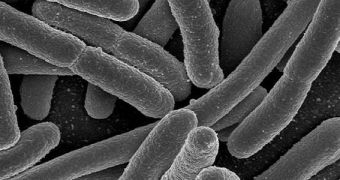Michigan State University (MSU) researchers announce that they've completely deciphered the genetic code of a killer strain of Escherichia coli (E. coli). This deadly form of the bacteria claimed 54 lives during an epidemic in 2011.
Dubbed E. coli O104:H4, this variant of the widespread microorganism proved virulent, infecting no less than 3,800 individuals. What set it apart from other deadly versions of E. coli was the combination of genetic material that allowed it to infect and kill so fast.
MSU experts found that this type of E. coli produces higher amounts of the Shiga toxin than other strains. Production starts as soon as the bacteria attach themselves to cells, and coat their colonies in a protective biofilm.
“Our research demonstrates that biofilm formation is critical for toxin production and kidney damage. If we can block the bacteria from forming a stable biofilm, then it is likely that we can prevent future E. coli O104:H4 infections,” the MSU group explains, quoted by EurekAlert.

 14 DAY TRIAL //
14 DAY TRIAL //